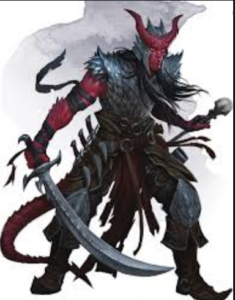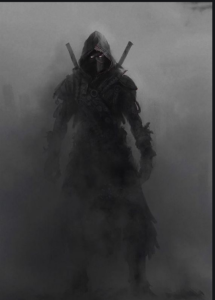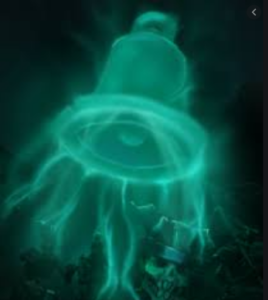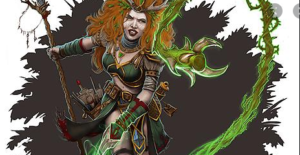| Spell name | Rho Aias |
| LEVEL | 6th |
| CASTING TIME | 1 Reaction * |
| DURATION | Instantaneous |
| SCHOOL | Abjuration |
| RANGE/AREA | Self |
| ATTACK/SAVE | None |
| COMPONENTS | V, S, M ** |
| DAMAGE/EFFECT | None |
Don’t miss: Expeditious retreat 5e
| Spell name | Rho Aias |
| LEVEL | 6th |
| CASTING TIME | 1 Reaction * |
| DURATION | Instantaneous |
| SCHOOL | Abjuration |
| RANGE/AREA | Self |
| ATTACK/SAVE | None |
| COMPONENTS | V, S, M ** |
| DAMAGE/EFFECT | None |
Don’t miss: Expeditious retreat 5e
Ray of Frost is a frigid beam filled with light white streaks that are hit on the cold damage as well as the speed is also reduced with 10 feet until you start for the next turn. The damage of the spell is increased by reaching the 17th, 11th and fifth level of the range. The casting time which is taken by the follower is one action with the range of 60 feet instantaneously.
The beam of action is very fire that is created by the ice creature which can be seen. Spell check range of attack started by the cold damage and simultaneously the speed will be reduced when it reaches 10 feet at the start level of the next turn.
The creature range is appeared to strike The White blue streaks based upon the target and the speed is also overwhelmed when it appears towards the target. The next cold damage will be targeted based upon the speed and their enemies will be attacked during the time of war.
Actually the Frost is generated by two times of the charge varies the duration and the channel created in the iceberg will attack the enemies for every 5 seconds while dealing 120 percentage of the power. The power damage will be slowed down many times the moment of 60 percentages simultaneously each and every frost-free will be damaged and it will be increased by 10% age
River Frost game is one of the interesting and it is like a bridge and ladder adventurous game like dungeons. It is one of the creative and adventurous games which follow the complete rules and regulations.
It mainly targets the damage and creature which is very strong designed with solid quantities with a different spell in nature. The game is narrated with a lot of magical effects which includes dungeons and dragons with different abilities and affirmative limitations invented in a creative way.
Even though, a lot of limitations is occurred to prevent the magic freedom of the game and also to add the abilities by nature.
The personal abilities look in a limited version when compared to the figure and environment so to overcome those limitations the goals of the spells are achieved magically.
To overcome the limitations create a magical environment to motivate against challenges and to overcome a great with a new type of abilities. In this game, you have the option of breaking long tradition with some different magic by paying the attention of other players who play positive or even in the negative form.
The reign of fire Frost will attack its coolest spells which is one of the most advantage and have checked its attributes then and then in order to continue the spell till the end.
Mass Cure Wounds 5e D&D: There are different kinds of powers available in the D&D game, 5th edition and it is necessary for every user to figure out a way to use it to the maximum extent. Most of the people prefer to use different kinds of flowers based on the requirement because it helps in to find an easy way to advance to further results from time to time. as well as you can know D&D 5e Character Sheet PDF Download from here.

It is necessary for every player to have a sufficient amount of powers in order to defend an attack from other players effectively. Mass cure wounds have been a popular power which has affected a lot of players in the current generation market of the game because it helps to cure only naked span of time in order to stay away from extensive injuries on a daily basis.
Power in the game plays a massive role to win over the opponent from time to time. Mass cure wounds 5E is a power which is a lot of strength or value to the player because he or she will have enough amount of capability to cure the world without compromising on the game quality from time to time.
It is highly recommended for people to check and compare different kinds of flowers available in the gameplay because it has the same to enjoy a proper balance by playing the game on a daily basis. Most of the people would prefer to have a sufficient amount of power both in terms of attacking and defending because it helps up to enjoy good planets in order to stay away from death from time to time.
Mass cure wounds 5E is a special power which gives and capability for the player to cure all the wounds in the body in a quick span of time. It is highly recommended for people to know and understand the characteristics of the power before using because it has some to stay away from unwanted powers on a regular basis.
Most of the people would prefer to have a good balance in terms of powers because it plays a crucial role to enjoy sufficient amount of progress in the game on a daily basis. It is important for every player to understand the effect of mass cure wounds 5e in order to gain maximum mileage of the power while playing the game effectively.
It is a known fact that there are multiple powers available in the game and it is important to take enough advantage for the user to progress in the game from time to time.
It is highly recommended for people to try and understand the characteristic of the power in order to utilize it to the maximum extent without compromising on the gameplay on a daily basis. Mass cure wounds 5e gives enough power for people to cure any kind of wound on the body, which play a crucial role for the player Advanced further levels in a quick time of time.
The best spell combos in D&D 5e often involve how to immobilize the enemy then deal damage, or making movement hurt and forcing the enemy to move. There also are some ways to lower saving throws then use a spell that needs that saving throw.
You place a curse on a creature that you simply can see within range. Until the spell ends, you deal an additional 1d6 necrotic damage to the target whenever you hit it with an attack. Also, choose one ability once you cast the spell. The target features a disadvantage on ability checks made with the chosen ability.

If the target drops to 0 hit points before this spell ends, you’ll use a bonus action on a subsequent turn of yours to curse a replacement creature. A remove curse sew the target ends this spell early.
At Higher Levels. Once you cast this spell employing a spell slot of the 3rd or 4th level, you’ll maintain your concentration on the spell for up to eight hours. once you use a spell slot of 5th level or higher, you’ll maintain your concentration on the spell for up to 24 hours.
The primary advantage of this variant is that it eliminates the “every other square counts double” rule for diagonal movement because it eliminates diagonal movement. Characters simply move from hex to adjacent hex, changing direction as they like. to work out the space between two hexagons, just count hexes by the shorter path (in most cases, there’ll be variety of equally short paths).
Using a hex-based grid changes relatively little about the sport, but poses a mapping dilemma for the GM. Most buildings and dungeons are supported 90-degree and 45-degree corners, so superimposing a hex-based grid on a structure leaves the GM with many partial hexagons, not all of which are large enough for a Medium creature. Use this variant as long as you’re comfortably adjudicating these partial spaces on the fly.
This combo delivers three 3d6 attacks with each casting. Cast hex the primary then follow it up with scorching Ray to feature an additional d6 whenever one among your rays hits. At higher levels, it puts out something like 15 d6 if all of them hit.
Of course, If you cast a hex, the sole other spells you’ll cast during that turn are cantrips. Another fun method is Melf’s Minute Meteors. If you’ll cast it off before battle – even better.
Round 1: Bonus action (Hex) + Cantrip or Attack of your choice
Round 2: Hexblade’s Curse (if Hexblade Warlock) Melf’s Minute Meteors (send 1-2 after them with extra hex damage… both hexes)
Round 3+ Use bonus action to send more meteors and you’ll also cast more spells, cantrips, or attacks for the bulk of the remainder of combat.
On the second turn, you’ll repeat the combo, or cast other spells while using your bonus action to attack with spiritual Weapon all without concentration. Hex also stacks with Crown of Stars. which can be cast up to an hour before and puts out some nice damage also .
With Misty Step 5e spell, you can teleport up to 30 feet for an unoccupied space until you can see and it is briefly surrounded by the silvery mist.
The bonus actions are just like the actions which you can take as well as an action on the turn of you. Per each turn, you get only 1 bonus action. But actually, you have totally Misty Step -> Booming Blade, for an instance or else any other bonus action spell+ action spell.

By using the 5e misty step you can easily avoid the fall damage but you should cast it on the round which you would have crushed into the ground.
Nothing will prevent you from the grappled condition to do anything because misty step d&d doesn’t require movement.
Briefly surrounded by the silvery mist, you teleport up to 30 feet for an unoccupied space that you able to see.
The ring possesses 6 crystal stones holding some kind of magical shadowy substance inside. Each crystal stone provides one use of the misty step spell. Using a crystal stone allows you to cast the misty step spell, the magical shadowy substance inside disappears. You can use this effect up to the total number of powered crystal stones located on the ring. Every Midnight, 1d6 crystals are replenished.
If you roll a:
3-7. you successfully cast misty step, but as you reach your destination, you take 1d4 of Force damage.
8-18. you successfully cast misty step, you reach your destination.
Basically, they spend their action on whichever Area of Effect spell will deal the most damage, starting with the powerful Chain Lightning and Cone of Cold, then moving onto Fireball. Ice Storm is used to prevent melee opponents from getting too close, and Misty Step is used to escape any opponents that do manage to get within melee range.
Mage Armor and Mirror Image are the Evoker’s primary defensive spells. It will try to cast them before combat if possible. However, these spells aren’t worth giving up action once combat begins (better to cast a damage-dealing spell)
In Toll, The Dead 5e Spell you are doing point at one creature which you’ll see within a variety and also the sound of a dolorous bell fills the air around it for a selected moment. But confirm the target should succeed on a Wisdom saving throw instead take 1d8 necrotic damage. Suppose, if the target is missing any of its hit points then it instead takes 1d12 necrotic damage.
So I used to be during a Discord server last night when one among the opposite members was watching the way to do a macro up for the cantrip “Toll the Dead”. This cantrip is interesting for one reason, it’s modified by the extent of the caster AND modified if the target of the spell is already damaged or not.

So on the proper, you’ll see the outline for the spell, with a highlight on the extent modification. It also shows the modification supported the health of the target.
Use spiritual Weapon to try to to the initial damage to pump up toll the Dead on the primary turn. On the second turn, you’ll repeat the combo, or cast other spells while using your bonus action to attack with spiritual Weapon all without concentration.
Send your small army of zombies over to grapple your targets, then drop a cloud kill on top of them. Sure, they’ll probably kill the zombies eventually, but it’ll be a significant slog to urge freed from all those grapples.
Wall of Force as a dome or wall blocking almost any enemy from going to them (except teleportation) lasts 10mins. The wizard starts casting Leomund’s Tiny Hut for 1 minute, lasts 8 hours. Within the Hut, the wizard can take a soothing minute to cast the teleportation circle. the right escape plan for a celebration of multiple casters.
First, transmute stone to mud which cuts movement speed. Then cast slow to further cut movement speed and AC. Then cast fireball for lots o damage. Best done by a gaggle so you’ll get in the maximum amount of damage as possible.
Cast conjure elemental then magic revolves around the basic you summoned and immediately break concentration and begin casting planar binding. Total casting time 1 hour and a couple of minutes and you’ve got an elemental bound for twenty-four hours (or 10 days if you employ a 6 level slot) with no need for concentration.
This three spell combo is triggered instantly. Cast a resilient sphere as a contingency spell. Make the contingency when death ward triggers. You slow fall when you’re closer to the bottom like 50-100 feet, you’ll keep blasting the enemy while you’re still within the air out of the reach of melee attacks.
You point at one creature you’ll see within range, and therefore the sound of a dolorous bell fills the air around it for a flash. The target must succeed on a Wisdom saving throw or take 1d8 necrotic damage. If the target is missing any of its hit points, it instead takes 1d12 necrotic damage.
There are actually a worrying number of spells that allow you to try to do this, but the only is Arms of Hadar. It’s the first-level spell that’s exclusive to the Warlock list and summons “tendrils of dark energy” that attack every creature within 10ft.
You invoke the facility of Hadar, the Dark Hunger. Tendrils of dark energy erupt from you and batter all creatures within 10 feet of you. Each creature therein area must make a Strength saving throw. On a failed save, a target takes 2d6 necrotic damage and can’t take reactions until its next turn. On a successful save, the creature takes half damage but suffers no other effect. When you cast this spell using a spell slot of 2nd level or higher, the damage increases by 1d6 for every slot level above 1st.

Casting Time: 1 action
Range: Self (10-foot radius)
Components: V, S
Duration: Instantaneous
Scales: Yes
Casters: Warlock
At the caster’s behest, the bottom would sprout tendrils of dark energy during a 10-foot (3 meters) radius. they might swing at the creatures within the area and harm them with their necrotic energies and hinder them. Only a test of strength would lessen the harm and not cause the creature to be hindered.
The nature of Warlock spell slots means for the vast majority of the sport you’ll be casting it at higher levels. Again, the scaling may be a little anemic, dealing only 6d6 when fired off through a fifth-level slot. For comparison, this is often just over half the damage a Fireball using an equivalent slot would cause, with a smaller area of effect and therefore the requirement that you’re standing right within the middle of the enemy formation.
It’s a wonderfully evocative spell that’s great RP-bait for nice Old One pact Warlocks and may be a useful spell for a Warlock who wants to urge out of a pickle, but it’s also very situational.
The fact that Arms of Hadar hits everyone in range, regardless of their allegiance, severely restricts its ability to counter an ambush or charging enemies, and ideally, traditional long-range spellcasters should never get into a situation when they’re surrounded by enemies within the first place. Even Blade-locks probably have better uses for his or her spell slots once they get a couple of levels under their belt.
At first level Arms of Hadar may be a decent spell for getting you out of sticky situations and dealing damage over a good area. However, despite its awesome flavor it soon gets outclassed and is perhaps best left by the wayside.
If you’re desperate for an opportunity to use tentacle-based attacks – which is entirely understandable – it’d add up to stay it available until you’ll learn the far more effective (and thoroughly creepy) Hunger of Hadar then swap it out for something more practical.
It seems a universal rule that from comics to boardgames, all aspects of nerd culture must eventually make some kind of nod to the Cthulhu mythos. In D&D this often manifests within the sort of Warlocks battering people with otherworldly tentacles.
You choose some extent within range and cause mental energy to explode there. Each creature during a 20-foot-radius sphere centered thereon point must make an Intelligence saving throw. A creature with an Intelligence score of two or lower can’t be suffering from this spell. A target takes 8d6 psychic damage on a failed save, or half as much damage on a successful one.
After a failed save, a target has muddled thoughts for 1 minute. During that point, it rolls a d6 and subtracts the amount rolled from all its attack rolls and skill checks, also as its Constitution saving, throws to take care of concentration. The target can make an Intelligence saving throw at the top of every one of its turns, ending the effect on itself on a hit.

Synaptic static was an enchantment spell that caused an explosion of mental energy, scrambling the thoughts of everyone caught within the blast.
The spell created a 20‑foot (6.1‑meter)-radius blast centered on some extent of the caster’s choice within a variety of 120 feet (37 meters). All creatures within the blast radius who possessed even moderate animal intelligence suffered massive mental damage, and people who couldn’t resist the spell had their thoughts jumbled for up to at least one minute, considerably impairing all their attempts to perform activities or maybe consider spells.
Here’s a replacement sheriff in town when it involves 9th-level attack spells. Sure, it deals with the book’s recommended damage for a 9th-level spell and not the much higher damage of meteoroid, but it targets creatures of your choice during a huge area, and it stuns the targets until they pass a save. Sure, tons of what you’re fighting at 17th+ level spend a use of Legendary Resistance and moves on with eating your face, but if that doesn’t happen, this will be a significant fight-ender. Look out for it in enemy hands, because it could lock down most of a celebration during a single action.
The spell captures a number of the incoming energy, lessening its effect on you and storing it for your next melee attack. You’ve got resistance to the triggering damage type until the beginning of your next turn. Also, the primary time you hit with a melee attack on your next turn, the target takes an additional 1d6 damage of the triggering type, and therefore the spell ends.
Another within the vein of low-control sinister conjurations, very similar to an infernal calling. There are tons of various failure states here, but it’s not doomed outright: if you’ll get an enemy to attack the demon and stay within the demon’s reach, you don’t get to provide it any longer orders (or allow the demon further saves to flee your control). This spell is filled with stories, and that I dig it.
The downside of this and everyone spells that conjure creature from the Monster Manual is that creating decisions requires some working knowledge of the Monster Manual. These spells are definitely not for low-to-medium-engagement players.
When you cast this spell, a bit of vine grows into a thorn-studded whip capable of savagely ripping your opponent’s flesh. You’ll wield this whip as if you were proficient, and it follows all the foundations for a whip except that it deals 1d8+1 points of lethal damage per strike. Any time you strike an oversized or smaller opponent successfully with the whip; you’ll release it and entangle the creature.
Doing this ends the spell, but the thorny vine continues to wrap around your enemy until the opponent breaks free with a successful Escape Artist check (DC adequate to the save DC of the spell). On a failed check, the creature takes further 1d4 points of injury and remains entangled. On a successful make sure exceeds the DC by 10 or less, the creature takes the extra damage within the process of freeing itself. A creature also can plan to burst the vine with a DC 20 Strength check, although it takes 1d4 points of injury whether or not the attempt succeeds.

You create an extended, vine-like whip covered in thorns that lashes out at your command toward a creature in range. Make a melee spell attack against the target. If the attack hits, the creature takes 1d6
The ground is crumbling beneath you. A 30-foot crater forms between you and therefore the last drow foe. As he loads a bolt into his crossbow to deal a final blow to at least one of your weakened companions, you produce a thorny whip, grabbing the drow and pulling him into the crater, throwing him to his doom.
Your tank barbarian runs headfirst through a cavern entrance. Runes light up—he has triggered a trap. He drops to the bottom, writhing, ugly boils growing on his skin. Unsure what’s causing this curse, you cast Dispel Magic. The boils disappear, your barbarian is ok , and you proceed into the dungeon.
Not only is Thorn Whip a pleasant makeshift weapon which has scalable damage together with your level (from 1d6 at level 1 up to 4d6 by level 17), this cantrip features a range of 30 feet, is instantaneous and may pull your target 10 feet closer to you. Plus, your melee spell attack bonus uses your spellcasting modifier, adding quite bit to your “roll to hit.” Using this less as a damage dealer and more as a utility spell, the chances are endless.
As gratifying because it is to deal immeasurable damage, it are often even more heroic to act quickly to save lots of the party from effects that fighters, barbarians, and rogues are useless against. To be the sole one who can help the party find the monster, or to be the one, who protects the party from an unseen force, is rewarding in itself. Plus, you get to carry that over your party’s head whenever they’re useless! Be the thorn whip who steps in heroically when things are dire, and you’ll reap the rewards of a satisfying campaign.
In this hand of radiance spell you create to lift your hand, and also burning the radiance erupts from it. Each and each creature of your choice which ready to you’ll able to see within a variety mainly 5 feet of you want to be succeeded on a constitution saving throw instead take 1d6 radiant damage.
Actually, this dnd spells damage would increase by 1d6 whenever you reach the 5th level (2d6), 11th level (3d6), and also at the 17th level (4d6). There’s a little variation within the hand of radiance vs word of radiance. You’ll check details about the hand of radiance within the above lines and therefore the word of radiance is out there in level 0 (cantrip) and it’s a casting time of 1 action.

By speaking one divine word, the caster emitted a burst of radiance that burned selected creatures within a variety of 5 feet (1.5 meters) that we’re unable to resist its effect. The intensity of the holy light increased because the cleric became more responsible and powerful.
Just like in the other magical world, spells in D&D are often used from anything to blasting any enemy away with one hand gesture, to ridding an ally of poison, to easily add a touch more flavor to your dinner. Got to interrogate a passing cow? There is a spell for that. Got to summon a noble steed out of thin air? There is a spell for that. got to make a corpse glow within the dark sort of a Halloween-themed nightlight? Yes, there’s even a spell for that.
Much like the variability of classes, the variability of spells reflects the very fact that there is tons more to D&D than smashing through hordes of goblins. Not all spells were made equally, either, and discussion of this imbalance ranges from frustration about “broken” game mechanics to gleeful hand-rubbing at the prospect to be a god of your world. For this list, we’ll be ranking spells that cause the most damage or enable a user to wield scary levels of power.
This build is fairly simple. Limiting our damage options to fireside damage and radiant damage is extremely limiting, but those still include many of the simplest damage spells within the game. within the party, this is often primarily a ranged spellcaster, but with medium armor and a shield, we will still interpose ourselves between weaker allies and things with spears and teeth if they slip past our more melee-oriented allies.
There are restrictions on using a bonus action to cast a spell. Remember if you cast a leveled spell (spell level 1-9) as a bonus action you’ll only cast a Cantrip as your action during your turn. With an eye fixed on the bonus action economy maximum your PC’s spell utility in combat.
The level nine enchantment only works on creatures with 100 hit points or fewer, but aside from that, there are not any downsides to the spell. Nothing happens if the spell fails aside from you will be ready to confirm the minimum number of hit points the creature you targeted has. As power goes, it’s pretty god-like. You better pray you do not meet an enemy Wizard that knows it.